The architectural industry has developed immensely in the last decade. New technologies have emerged that have transformed the way 3D modeling designers and architectural design services complete projects. Computer and digital technology, in particular, has helped improve efficiency and give architects a whole new way of creating structural designs. One such technology that has revolutionized the industry is 3D rendering.
3D architectural rendering for companies provides a plethora of benefits. It allows designers to experiment with new ideas, improve their efficiency, and create stunning marketing pieces. These are just a few of the benefits. In the article below, we discuss the benefits of 3D architectural rendering for companies in the real estate industry:
What Is 3D Architectural Rendering?
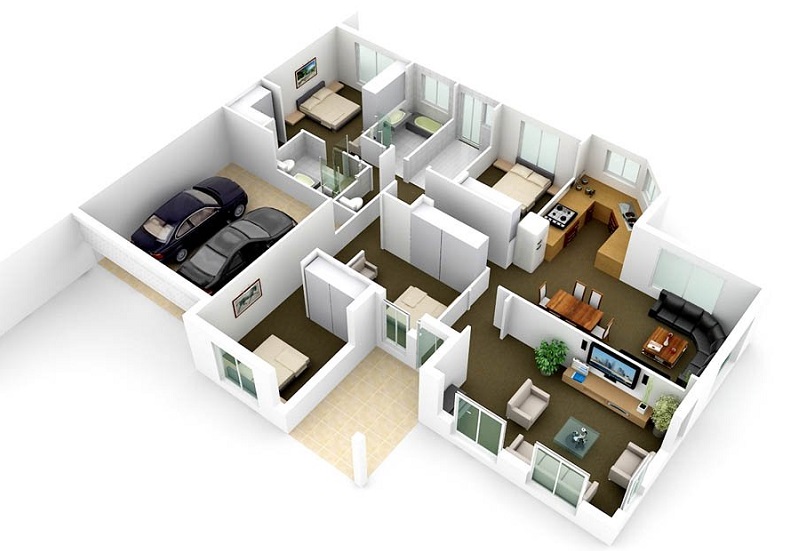
First, let’s look at what 3D architectural rendering is. This gives you a clearer understanding of the process and why it might be beneficial.
3D rendering is the process of turning 3D models into 3D representations on a computer. 3D rendering artists use powerful software to created detailed renders. The 3D renders may be 2D images, but they can represent 3D objects, such as buildings.
In today’s industry, the quality of rendering is unbelievable—images created are often deemed “photorealistic.” This means that the render essentially looks indistinguishable from an actual photo. If you put a photo and a photorealistic render next to each other, you would not be able to tell the difference.
The realism is achieved by the level of detail added to renders. In years past, 3D rendering was limited, and the end-products looked artificial with minimal detail. Today, however, architectural 3D modeling freelancers can add advanced features such as shadows, lighting, textures, and particle effects. Essentially, they can create stunning works of art that look like real-world projects.
In architecture, 3D rendering is used to create amazing building designs. Towering skyscrapers surrounded by lavish parkland, modernist residential buildings, and shopping malls, for example. In the sections below, you will see just how powerful 3D rendering is for architecture.
Software Used for 3D Rendering
To create advanced 3D architectural rendering, designers must use powerful computer software. These computer programs provide the tools to develop architectural designs and transform 2D blueprints into fully-realized projects. The following are examples of popular 3D rendering software:
- Maxwell Render
- V-Ray
- SolidWorks
- Blender
- Octane Render
- Autodesk Revit
- Lumion
Software such as these are often expensive. This is one of the main reasons why using 3D architectural rendering services is beneficial—it removes the need to purchase expensive software.
File Types for 3D Rendering
When using the above-mentioned software, a range of different file types is created. Some software has proprietary file types—these can only be used and viewed on the software itself. Others have vendor-neutral file types—these can be used and viewed on many platforms. The following are some of the common 3D rendering file types:
- DWG (Autocad / AutoDesk Revit)
- 3DS (3DS Max)
- BLEND (Blender)
- STL (Neutral)
- COLLADA (Neutral)
- IGES (Neutral)
- STEP (Neutral)
- VRML/X3D (Neutral)
When choosing 3D architectural rendering services, consider what file types they offer and how, as the client, you can view and interact with them. This could affect your business decisions.
Benefits of 3D Architectural Rendering for Real Estate Companies
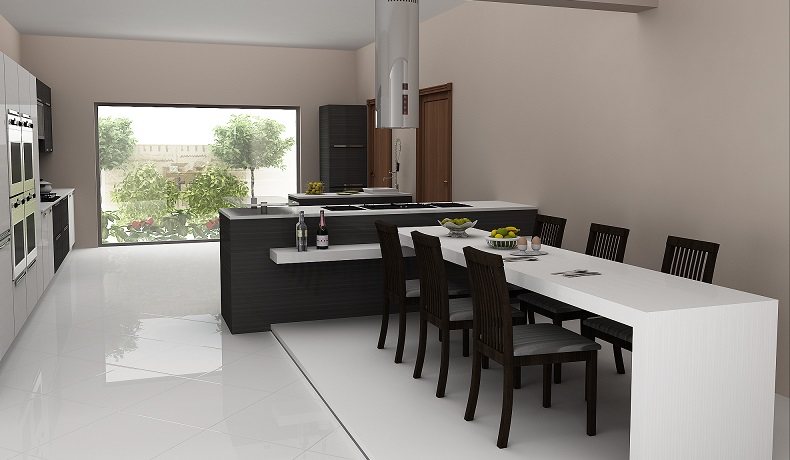
So, how does 3D architectural rendering benefit real estate companies? Real estate is hugely competitive—different towns and regions have real estate agents all vying for business. Any competitive advantage that can be achieved must be capitalized upon—using 3D rendering is one such way. Furthermore, due to the competitiveness of the industry, real estate companies must save costs and reduce processing times where possible. Again, 3D rendering is a great way to do this.
In the sections below, we have outlined 12 benefits of 3D architectural rendering for real estate companies:
Attract a Large Range of New Clients
Real estate businesses are waging a constant battle to attract new clients. A real estate business must keep their ideas fresh and present their properties in an easy-to-digest but attractive manner. What better way to do this than by creating stunning 3D renders?
Did you know that the human brain responds positively to curves and objects with gentle lines? This is partially why 3D rendering is so popular. Instead of presenting 2D blueprints, or static 2D property images, real estate agents can present stunning 3D images with depth and life. 3D rendering is simply more appealing and aesthetically pleasing.
As a real estate business, you can use rendering to enhance various aspects of your marketing and digital media. This can, in turn, make your business seem more appealing and attract a large range of new clients.
Place Designs within Fully-Realized Locations
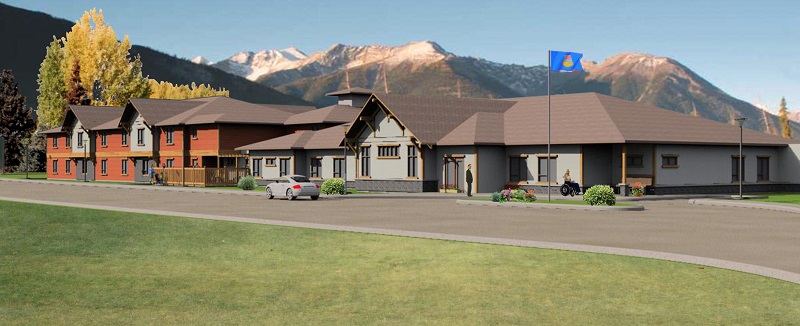
When using photography to convey real estate properties, businesses are limited to the level of detail they can show. For example, it would not be feasible to show a property within its wider physical location using photos—imagine the work involved and the effort this would take. You could, of course, provide a link to the property on a map-generating site such as Google Maps, but this would have limited effectiveness.
Using 3D rendering, a business could create a photorealistic location for its properties to sit in. This allows clients to have a greater visual representation of the properties’ location, as well as the building itself. In most instances, location and the town/city a property resides in is just as important as the quality and design of the building itself.
Furthermore, 3D rendering provides additional possibilities for representations of upcoming projects and new developments. For example, if a real estate business is promoting a new residential development, 3D rendering could be used to showcase the whole landscaped area such as roads, communal areas, and more. It allows for an immersive experience that gives customers much more than a simple building layout.
Improve the Precision and Accuracy of Presentations
From an architectural viewpoint, 3D rendering allows for a higher degree of accuracy and precision for real estate listings. Displaying 2D blueprints, static floor plans, and other rudimentary diagrams do not provide 100% accuracy. There is potential for error. Furthermore, these 2D plans and drawings often do not show a relative scale.
3D rendering removes this potential for error. Obviously, human error can still occur, but things such as measurements, scale, and angles should be perfect. When creating 3D renders, the images are translated from 3D models. These models are created using minute measurements and details with virtually zero tolerance. This means that the accuracy of 3D renders is unparalleled.
Instead of looking at a 2D plan with no clear idea of scale or dimensions, clients can look at accurate and precise 3D renders that show scale, depth, and angles.
Quickly React to Design Changes
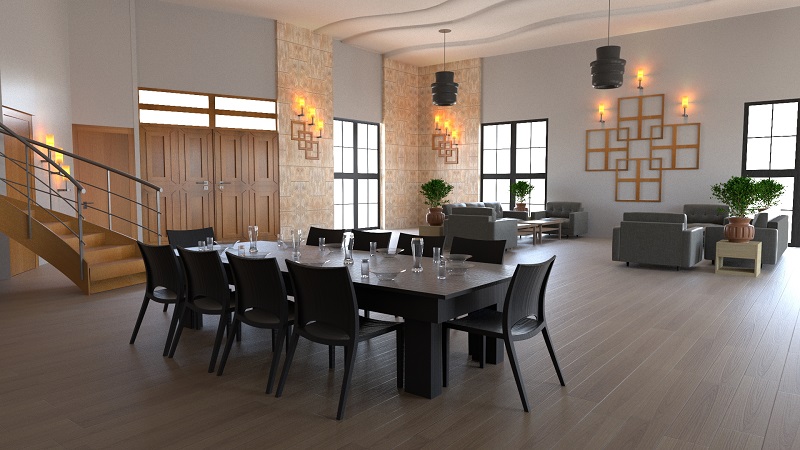
One of the main benefits of hiring a 3D real estate rendering service is its ability to make quick changes. Editing times for 3D rendering are unbelievably quick, especially compared to photoshoots.
If a real estate company uses only traditional photography-based media, the process involved to make changes is lengthy and time-consuming. First, the photographer would have to re-visit the site or re-create the photoshoot. Next, they would have to create a new set of photos. In addition to this, they would have to edit them using post-processing software before re-submission to the real estate agent.
In contrast, a 3D rendering specialist could simply edit the original design file and make changes instantly. The reaction times are incomparable. This allows real estate agents a greater degree of flexibility. For example, they could quickly change the furniture or interior designs of new property developments.
Traditional photography does not allow for quick reaction times and the ability to make on-the-fly design changes.
Reduce Operating and Production Costs
Using photography and other traditional methods is often costly. The cost to hire a photographer several times for different photo sessions can add up. Furthermore, if a real estate agent decides to produce their own photography, there is an associated cost for purchasing a high-quality DSLR camera and equipment. This can soon run into the thousands.
In contrast, hiring professional 3D architectural visualization services is relatively inexpensive. There is no requirement to purchase expensive equipment. The design specialist provides everything—as a designer, they should have access to powerful rendering software, for example. Moreover, using freelance rendering services means that a real estate business doesn’t have to pay a salary. By using a service such as CAD Crowd, real estate businesses can pay only for the rendering they require—this makes projects cost-effective.
Reduce Overall Design Time
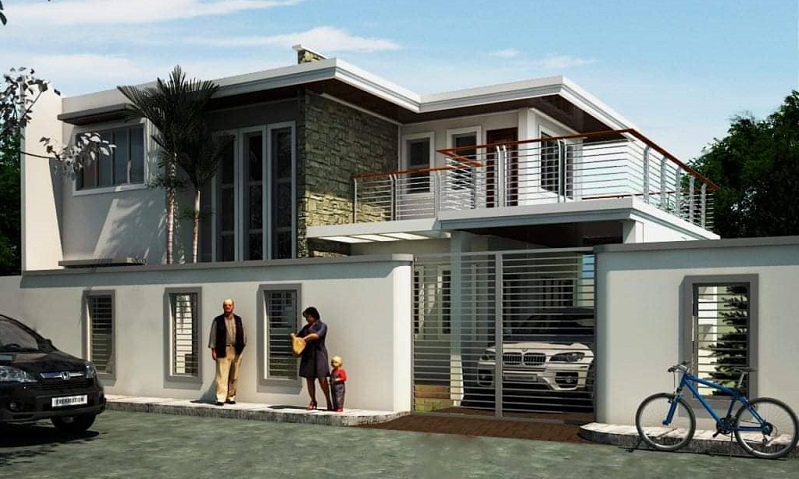
To build upon the above point, 3D rendering also helps save time. Using photography to create marketing and real estate media is a lengthy process. First, you have to hire a photographer—this process in itself takes time. Secondly, you have to arrange a time with the photographer to visit the site or create a photoshoot. Thirdly, the photographer has to undertake their work, edit the photos, and submit for approval. As you can imagine, this whole process can take weeks.
In comparison, using 3D rendering services is relatively quick. The process couldn’t be easier. All a real estate company must do is hire a freelance 3D render specialist and give them the project brief. The render specialist will then create the required images in the agreed timeframe. Once finished, the work is submitted for approval. Any changes required are made quickly—the designer simply must edit the original files.
There are minimal steps involved, and much less planning and time required. Using 3D rendering allows for efficient project management and time-saving—this, in turn, allows real estate agents to concentrate on other areas of their business too.
Improves Overall Quality of Marketing
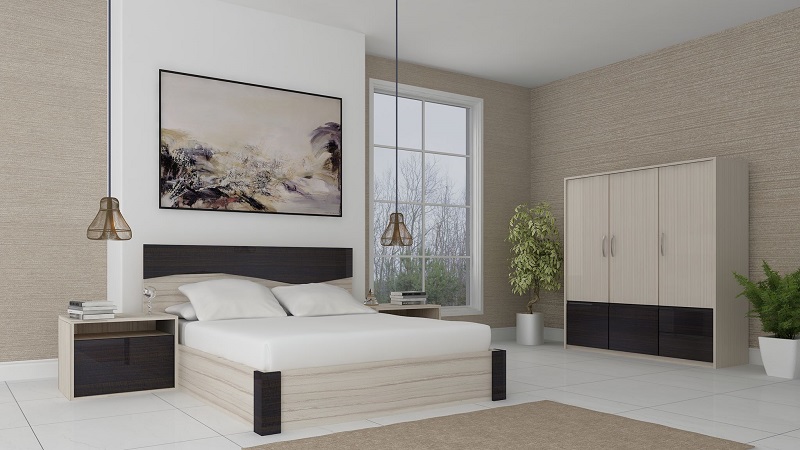
It is not enough to produce marketing that has great content. The marketing must also look superb, especially in an industry such as real estate. In the real estate industry, appearance and quality play a major role—the quality of a building’s exterior, for example, or the quality of a furnished interior.
Creating marketing with low-resolution images or poorly composed photographs can have a detrimental effect. It can cast your business in a negative light and give potential clients doubt over the authenticity and quality of your services. If your business cannot produce high-quality marketing, can it be trusted to provide high-quality real estate services? This is the thought process clients could have.
3D rendering offers an unparalleled level of quality. Years ago, the quality of 3D renders wasn’t fantastic—it was easy to tell that the images were computer-generated. This is not the case with modern 3D architectural rendering. The quality is amazing—the images are photorealistic and contain intricate details. This can greatly boost the overall quality and finish of your marketing pieces. This, in turn, can project your business in a positive light and also help attract new customers.
Spot Any Potential Structural or Design Issues
This applies mainly to the architectural industry, but it also has significance for real estate. Let’s say, for example, that you are working with an architect on promoting new housing development. The architect has sent initial 3D rendering concepts to look at.
On analysis of the images, you notice some potential design flaws and room for improvement—some of the housing plans are unrealistic, for example. The architect could quickly make changes and amend these designs. This helps stop any problems further in the development chain. Imagine if you were showing a potential buyer around the development and these design flaws had not been spotted? It could potentially lose a sale.
3D interior visualization services are used before construction phases and can save time and effort. It can improve communication between real estate agents, architects, and other businesses within the industry.
Improved Marketing Content and Appeal
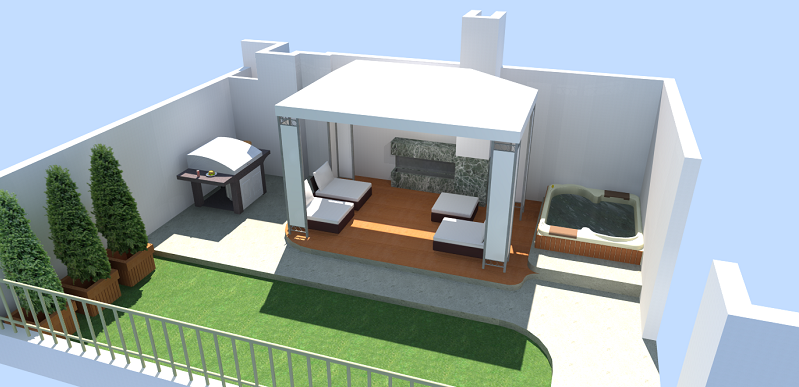
Marketing is an important tool for a real estate business. Real estate agents must have a myriad of practical ways to promote their company and their property listings. Different media is used for marketing such as social media, websites, banner ads, TV, video presentations, and more. Having effective marketing is one of the best ways to remain competitive and to reach a wider audience.
Video presentations, in particular, are often used by real estate agents. Did you know that 64% of consumers are more likely to make a purchase or find more info if they see a video? 3D architectural rendering is suited for creating presentations such as this.
Imagine creating a stunning photorealistic video presentation of a new condo development. This would look superb—potential clients could view the new development and gain an idea of the properties within. 3D renders could also include surrounding details such as the condo grounds and even the part of the city that the development is in. 3D rendering can essentially enhance marketing and give real estate agents greater creative freedom.
Push Into New Markets Such as VR and AR
Virtual reality and augmented reality are used in many industries. These ground-breaking technologies offer a whole new way of displaying real estate listings. Virtual reality is the process of creating virtual worlds that users can interact with. Some VR requires specific viewing devices such as VR headset—other VR can simply be viewed in a web browser or on a smartphone.
Augmented reality is a combination of virtual reality and real-world viewing. Augmented items are overlaid into real-world locations. An example of this is the popular smartphone game, Pokémon Go.
As you can imagine, VR and AR in real estate have great potential. VR can be used in conjunction with 3D rendering so that users can take virtual tours of properties. Customers can view a property in its entirety through your website without leaving the comfort of their home. This level of convenience and customer immersion can greatly boost your competitive advantage.
Improve Ability to Compete in the Market
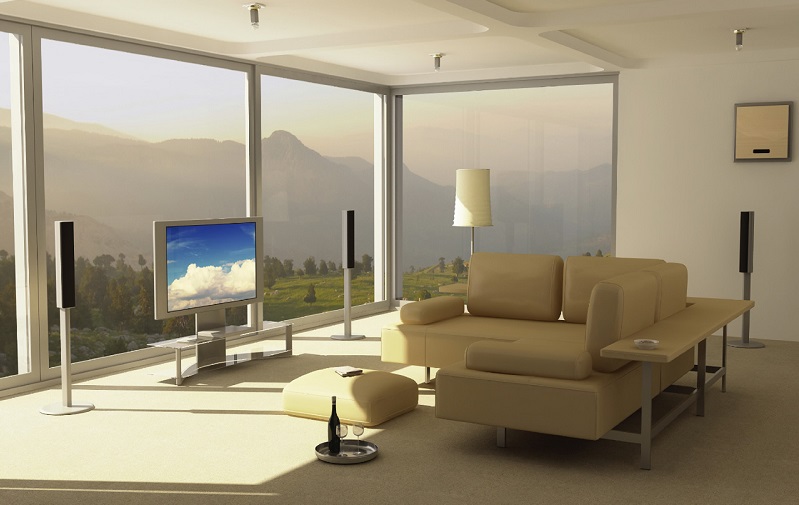
As we mentioned above, the real estate market is extremely competitive. One single town or city could have a handful of real estate agents all vying for business. From a business point of view, anything you can use to gain a competitive advantage is vital. 3D rendering is one such method you can use.
Firstly, it can be used to enhance your marketing. Websites, brochures, banner adverts—any type of digital marketing can be enhanced using 3D rendering. Furthermore, virtual reality and augmented reality can be used to enhance user experiences when viewing your property listings.
Imagine this scenario. A potential customer can view properties through your real estate site, or through a competitor. You have a user-friendly website that is embellished with 3D renders of stunning properties. Furthermore, customers can view VR walkthroughs of properties. Your competitor cannot offer this—they have a basic website, and only have photographic representations of property listings. Which do you think the customer would choose?
Produce an All-Encompassing Portfolio
A real estate portfolio is vital for this industry. Real estate agents should have a website that displays examples of the properties they have worked with. Furthermore, it should show works in progress—new developments still in the design process. Essentially, it should show exactly what your company has to offer and what kind of work it does.
3D rendering is a great way to facilitate this. Using 3D rendering, real estate agents can include a wider variety of items in their portfolio. Typically, real estate portfolios are confined to display current listings that the company is advertising. Using 3D interior visualization services, companies can expand this portfolio. Renders could be created in upcoming projects such as housing developments and new condo projects.
Furthermore, renders could also be added of upgrades and accessories. For example, let’s say that your real estate business is advertising a new development. Customers have the option to furnish properties within this development, or buy certain finishes for surfaces and walls, etc. 3D renders could be created of the different packages and upgrades available.
3D Architectural Rendering Could Take Your Real Estate Company to the Next Level

3D rendering really is an excellent solution. For architecture and real estate, it opens up a whole new world of possibilities. Furthermore, it allows real estate companies to utilize new technologies and widen their appeal through ground-breaking marketing.
As a real estate company, considering the usage of 3D real time rendering could widen your business appeal. Furthermore, it could help improve the efficiency of your business through reduced costs, and improved times for customer services. If you need 3D architectural rendering services as a real estate company, remember that Cad Crowd can help. We can facilitate these services and connect you with high-quality 3D rendering designers to suit your business needs. Let us give you a free quote.
